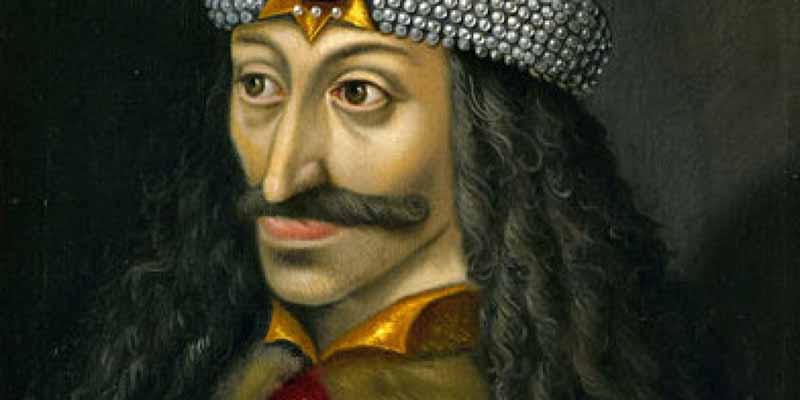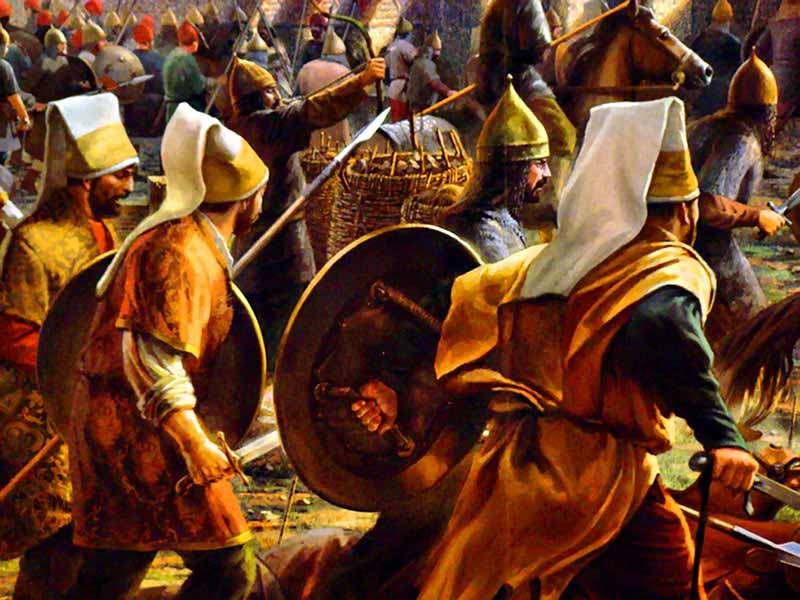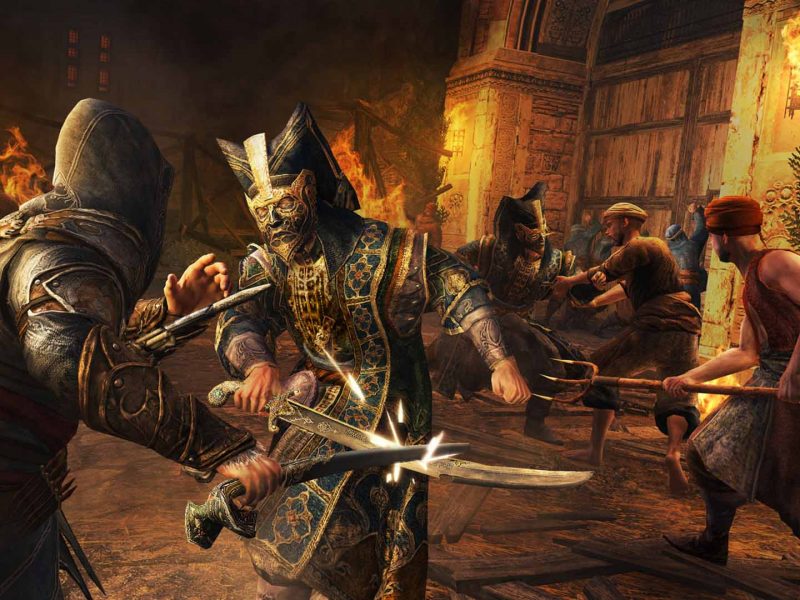The vampire myth is believed to have originated in the west by the great influence of popular culture. While witches and ghouls are popular in the East, the “vampire” is seen as a product of western culture. However, one of the biggest symbols of the vampire cult, Count Dracula, was also sourced from Vlad III, who was a prince that grew up in the Ottoman Palace. However, there was no known research about the place of vampires in the East and its history.
In contrast to what is known, Salim Fikret Kırgı claims with the sources that the vampire story spread from the Ottoman Empire to the West, in his book Ottoman Vampires, Rumors, Interactions, Reactions. Prof. Dr. Salim Fikret Kırgı has also prepared a thesis on vampire belief in Ottoman society at the Comparative History Department of Central European University in Budapest.
The Symbolic Animal of the Vampire is a Bat, its Reflection on the Mirror is Invisible, and it does not Like Garlic
The general characteristics of vampires have become especially known in popular culture in the last century. But still the general features are the same for centuries; the symbol animal of the vampire is a bat, it is invisible in the mirror, hates garlic, and controls the minds of people with a weak will. The first rule, which is almost unchanged, is that vampires are actually “living dead people” who are opposed to the laws of nature. Blood sucking is not a common feature of all vampires. This is a feature that has been added many years later. But the elimination of fictional vampires has not changed at all from the very beginning. In all myths and popular cultural publications, burning is the definite way to destroy every vampire.
In various languages spoken in the Ottoman Empire the name for “vampire” takes different shapes like “upir, obur, vrykolas, hortlak, cadı, mechey, tecz, and strigoi”. Under these names, the vampire myths take place in folk cultures and in various written sources of Eastern and Central Europe, Thrace, Black Sea, and Aegean regions. In fact, these folkloric vampires, who pioneered today’s fictional vampires, were born in the Ottoman borders between the 15th and 18th centuries, as the author quotes. The author claims that the source of fictional vampires in the West has spread to the West through the vampire myths of the Ottoman Empire, especially in the Greek Orthodox community.

Salim Fikret Kırgi, Osmanlı Vampirleri
Origin of Vampire Word is from Turkic Languages
Many methods used to destroy vampires are also seen in the Ottoman records. These are designated as pile driving, pouring quicklime, and burning. Moreover, there is a generally accepted belief among linguists that the vampire name is derived from a Turkish language group. It is highly probable that “obur” (glutton) is related to this root word, but it is thought that the transition from Turkic languages to Slavic languages is through another Chuvash or Tatar word.
Based on this theory, the origin of the word “vampire” is given as Turkish in various dictionaries. However, it is not a word transfer from the Turkish language to the Slavic languages during the period of beliefs in the Ottoman period or Ottoman rule in the Balkans. Obur, über, upır or whatever the original term was, must have passed from the Turkic languages to Slavic languages during the relations between the Eastern Slavs and the Central Asian Turks in the 11th century in Eurasian steppes.
But the most important is the presence of vampire fatwa (religious ruling) in the Ottoman records, in addition to the legal texts on how to fight the vampire, and the first-hand accounts of writers such as Evliya Çelebi, who talked about the first Muslim vampires in his Book of Travels.
Evliya Çelebi, in his Book of Travels, notes his observations on how vampires from the graves are identified: “The dead owners give property (money) to the glutton-identifiers (vampire-hunters), they go to the graves of those who were already dead, and they understand which dead goes out of the grave at night by looking at the damaged soil. Immediately, the people swarmed and dug the grave of the voracious child, and then they saw that the eyes of which turned to blood-filled cups and their face was red-blooded from drinking human blood.” (Evliya Çelebi, Seyahatname, Vol. XVII)

Vampire Janissaries in games
Vampire Fatwas of Ebusuud Efendi
The most clear and basic texts about the vampires in the Ottoman Empire are the vampire fatwas given by Ebusuud Efendi, the famous sheikh of Suleiman the Magnificent. This most famous sheikh-al-islam of the Ottomans is mostly known for his execution fatwas. During the long period of his rule, Ebusuud Efendi gave tens of thousands of fatwa.
Ebusuud Efendi issued various fatwas for the vampire cases in the Balkans. In some of these fatwas, Ebusuud Efendi argues that vampires have nothing to do with Muslims. However, he published more detailed reports on what should be done after seeing vampire incidents in Muslim villages. Because the rumors of vampire led to the discharge of some villages. In a fatwa that was given at that time, villagers were claimed to have been killed by some vampires from the cemetery. Therefore, Edirne judge initiated a legal process on what should be done about vampires. Ebusuud Efendi’s vampire fatwas had been on the agenda in order to excavate the grave, pile driving, and decapitating or burning the corpses, but the Edirne judge felt that the mentioned methods were only applicable to non-Muslim vampires and that he needed to consult with the top authority not to make a critical mistake.
Ebusuud Efendi told the Edirne judge to send two sergeants to the grave of Bıyıklı Ali, and apply the elimination of the vampire procedure in accordance with the fatwas only if both officers agree with the signs after their inspection.
It is worth mentioning that despite the various rumors and applications on the vampires, the judges of the period acted hesitant in the burning of bodies. According to the author, the main reason for this was the Islamic belief that the bodies that were burned were not cleared to go to heaven or hell.
War of the Vampires
Again in Evliya Çelebi’s Travelogue, an event in the Caucasus Mountains where he claimed to see in Circassia with his own eyes in the village of Pedsi was very compatible with some of the features of fictional vampires. According to Evliya Çelebi, “In the mountain village of Pedsi, the Abkhazian and Circassian oburs gravitated towards the sky.” The bloody shooting, one of the controversial supernatural parts of the Seyahatname, which he claims to have seen with his own eyes, opens the discussion of the credibility of the work as the primary source in some circles, and even leads readers to think about the drug use of the 17th century Ottoman elite.
What caused the author of the Seyahatname to be seen as drug-addict is “In this sky battle, flocks flying in the sky, elephants, bears, camels and swine bodies along the one hand glide across the sky and on the one hand are voracious vampire mouth.” Evliya Çelebi also states that the people of the region set fire to their bodies in order to destroy the vampires.

Vlad the Impaler
Mysterious Turcologist that relays “Dracula” Character from Seyahatname
Salim Fikret Kırgı said that Bram Stoker, who wrote the character of Dracula, which is almost the beginning of the fictional vampire legend, was markedly influenced by this vampire description in the Seyahatname. The author of this relationship is the Hungarian Turcologist Armin Vambery, who advised Bram Stoker while writing his novel. The mysterious character Vambery was not only a scientist, but also a strict literary lover, traveler, and agent. He spent most of his life in the Ottoman country and in Central Asia.
According to Kırgı, Vambery was the first orientalist to spy on Turkish geography. He translated the Seyahatname, which was forbidden for a period in the Ottoman Empire, and wrote a preface. This interesting character of the 19th century is believed to be the inspiration for both Dracula’s writer and vampire hunter Professor Van Helsing. Although the exact connection or inspiration is not clearly stated, the similarities between the supernatural characteristics of the vampire figure in the Dracula novel and the Circassian oburs in the Seyahatname are astonishing.

Charge of the Ottoman Janissaries
Janissary Vampires Erect after Janissary Range is Repealed
The highest number of records on janissary vampires in the Ottoman Empire is seen after the removal of the range. Kırgı considers this the most important reason as a reflection of the political reaction to the janissaries. Shortly after the removal of the Janissary Corps, in 1833, villagers in Tırnova claim that two janissaries from the tombs harmed them. Therefore, on the graves of the janissary vampires Tetikoğlu Ali Alemdar and Abdi Alemdar were perceived signs that they were open, “As in most cases, the corpses were in pristine condition, hair and nails were elongated, and the body was folded with twice the enlarged eye.“ Of course, the natural change in the process of corrupting a corpse was considered a sign of being a “vampire” at that time. Then Judge Hodja Sadettin Efendi decided to burn the bodies.
This is one of the rare works of this kind, which tries to reveal the connection between the folkloric vampire stories which are the most important symbols of popular culture and the vampire image in today’s world. Salim Fikret Kırgı has conveyed this unknown common cultural value shared in different proportions by the various ethnic religious communities in the Ottoman country, with their reflections on today’s world.

